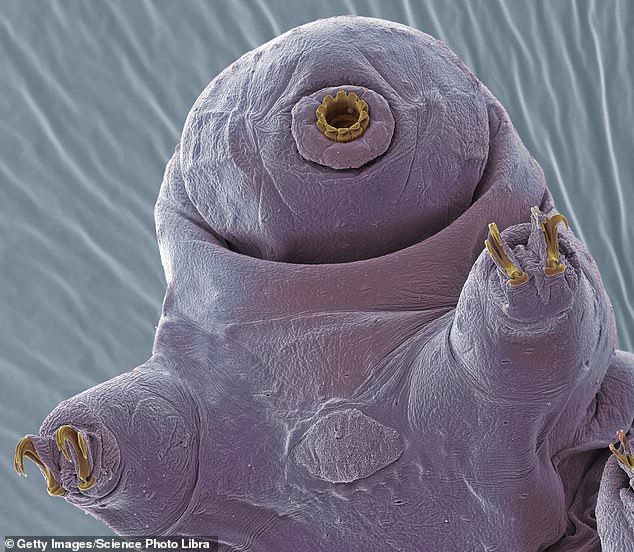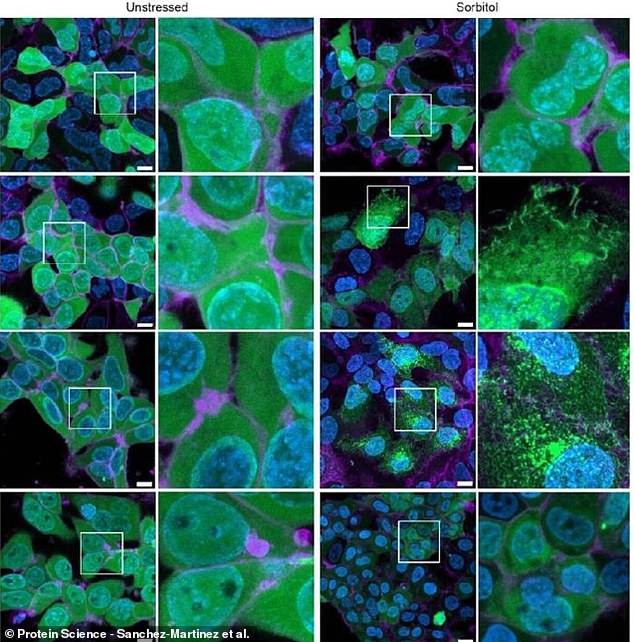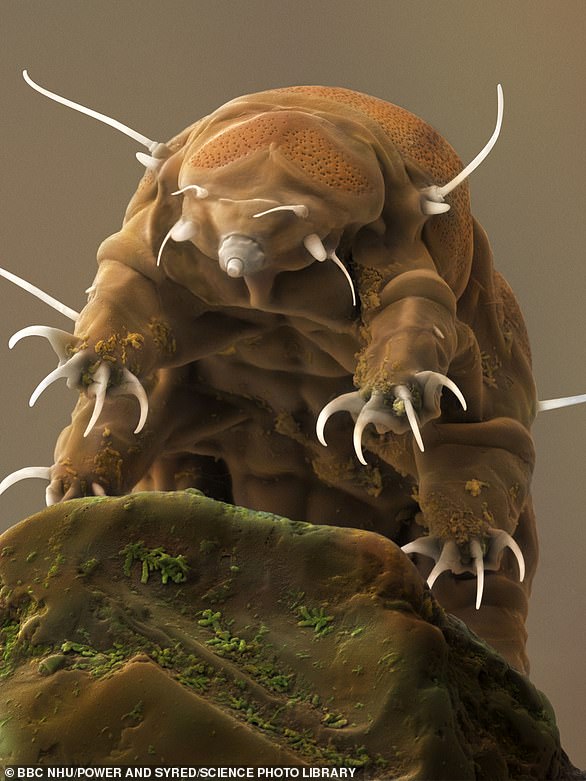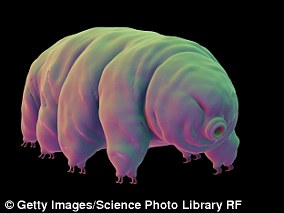Anti-aging elixir could be hiding in ‘indestructible’ tardigrades, say scientists who found microscopic creatures’ proteins slow cell damage
Scientists studying the mysterious creatures called tardigrades may have found a new potential tool in their quest to slow human aging.
The nearly microscopic eight-legged animals, also known as water bears, can survive conditions that would kill most other life forms.
That’s because they have proteins that form gels in the cells, slowing down life processes and causing cell damage – and the gel could be an anti-aging elixir.
A team of international researchers introduced tardigrade proteins into human cells in a laboratory, and found that they slowed down and entered a kind of hibernation – just like those in the ‘indestructible’ creatures.
A team of international researchers introduced tardigrade proteins into human cells in a laboratory, and found that they slowed down and entered a kind of hibernation – just like those in the ‘indestructible’ creatures

Tardigrades are small, aquatic, segmented micro-animals with eight legs that live in moist habitats such as moss or lichen
The new results offer clues to a way to put people’s cells or tissues into a form of suspended animation, much like a tardigrade does when under stress.
At only 60 centimeters long, tardigrades can survive the immense pressure of the deep sea, extremely high and low temperatures, total dehydration, prolonged famine and even the vacuum and radiation of space.
Their secret: a form of suspended animation.
When tardigrades become stressed, their entire body begins to slow down, including at the microscopic level.
They can reach a state called biostasis, in which they can tolerate near-complete dehydration for years until water becomes available again.
Now scientists have discovered that the proteins that enable biostasis in tardigrades could have a similar effect on human cells.
Senior researcher Silvia Sanchez-Martinez at the University of Wyoming said: ‘Amazingly, when we introduce these proteins into human cells, they gel and slow down metabolism, just like in tardigrades.
‘Moreover, like tardigrades, they become more resistant to stress if you put human cells into biostasis with these proteins, which transfers some of the tardigrades’ capabilities to the human cells.’
This discovery could mean that tardigrades are an important weapon in the fight against human aging.
If our cells could resist DNA damage from the sun or toxic exposure like tardigrade cells, then perhaps the entire aging process could be slowed, the scientists behind the new study suggest.
More immediately, this discovery means that human stem cells or medications such as blood products for hemophilia that require refrigeration can be shipped without it, increasing access to life-saving medicines for people in developing countries.
The crucial part of this process is a series of proteins called CAHS, ‘intrinsically disordered’ proteins that slow the tardigrade to the point of biostasis.
In biostasis, the animal turns into a ‘tun’, the name for a dormant tardigrade.
This ability is one of many that allows them to survive extreme conditions.

This image compares one protein that does not form gels, lysozyme (top left), with two that do: CAHS D (bottom) and gelatin (top right). Gelatin, the common ingredient in desserts, has a very similar structure to the CAHS proteins of tardigrades, indicating their gel-forming properties

Tardigrades are classified as extremophiles because they can survive dry conditions by turning into a desiccated state, in which they can remain for many years.
In the tun state, tardigrades can endure all kinds of abuse without being injured.
They can be exposed to many times the amount of radiation that would kill a person, but damage suppressors in their DNA keep them safe.
They can be heated to 300 degrees Fahrenheit or cooled to almost 500 degrees below zero.
As long as they remain in biostasis, they are safe.
Scientists previously thought this was due to a sugar called trehalose, which tardigrades and other dehydration-tolerant microorganisms can produce.
But recently they have discovered that this is not the whole picture.
Although trehalose appears to protect sensitive biological material, it appears that CAHS proteins are responsible for slowing everything down and pausing tardigrades in time.
In biostasis, the fluids in a tardigrade body are converted into gels as molecules slow down to enter the tun state.

Human kidney cells treated with CAHS D (second row from top) survived stress much better than untreated cells (top row) or cells given gene therapy to be stress tolerant (bottom two rows)
Previous research has shown that as the bear bear begins to biostasis, its body produces more and more CAHS proteins.
And the more CAHS proteins, the more gel-like the inside of the animal becomes.
In the new study, introducing CAHS proteins into human cells caused them to slow down and also gel.
‘Amazingly, when we introduce these proteins into human cells, they gel and slow metabolism, just like in tardigrades,’ said study author Silvia Sanchez-Martinez, senior research scientist at the University of Wyoming.
“Additionally, like tardigrades, when you put human cells into biostasis with these proteins, they become more resistant to stress, transferring some of the tardigrades’ capabilities to the human cells,” Sanchez-Martinez said.
Moreover, the process could be reversed, just as tardigrades exit biostasis.
“When the stress is resolved, the tardigrade gels dissolve and the human cells return to their normal metabolism,” said lead author Thomas Boothby, assistant professor of molecular biology at the University of Wyoming.
The results provide insight into how tardigrades can cultivate such alien stress tolerance, but that’s not all, write Boothby, Sanchez-Martinez and their co-authors: ‘Our findings provide an opportunity for pursuing technologies aimed at the induction of biostasis in cells and even whole organisms to slow aging and improve storage and stability.”
The study was published in the journal Protein Science.


